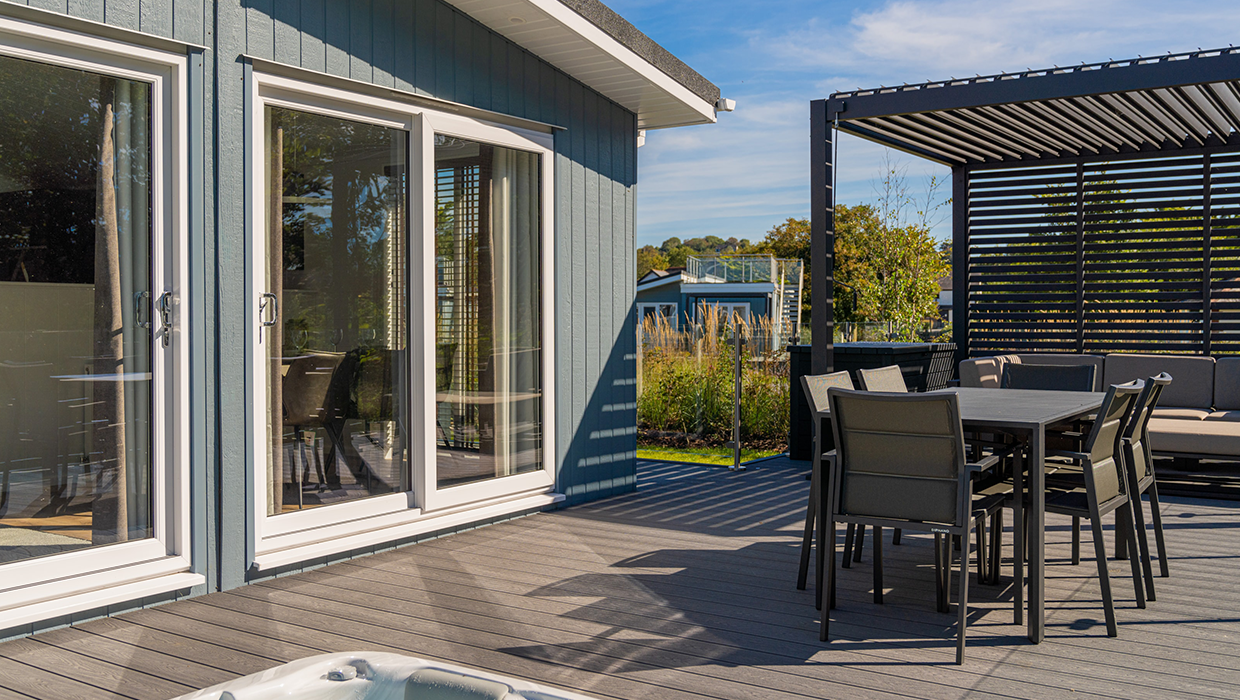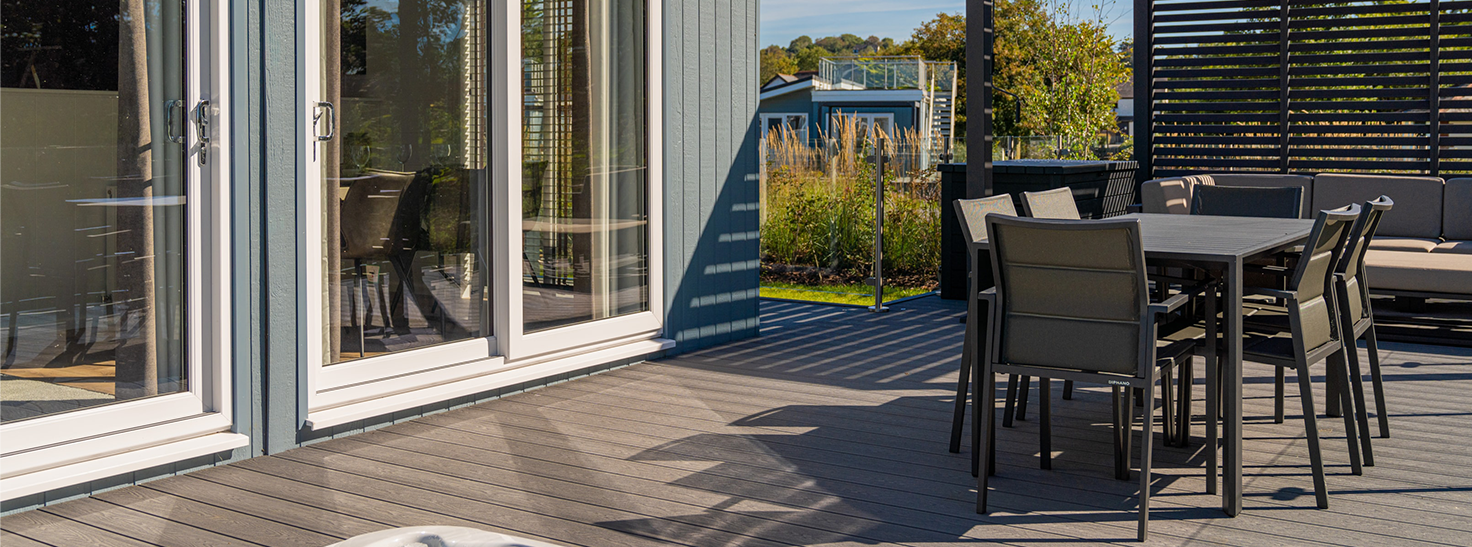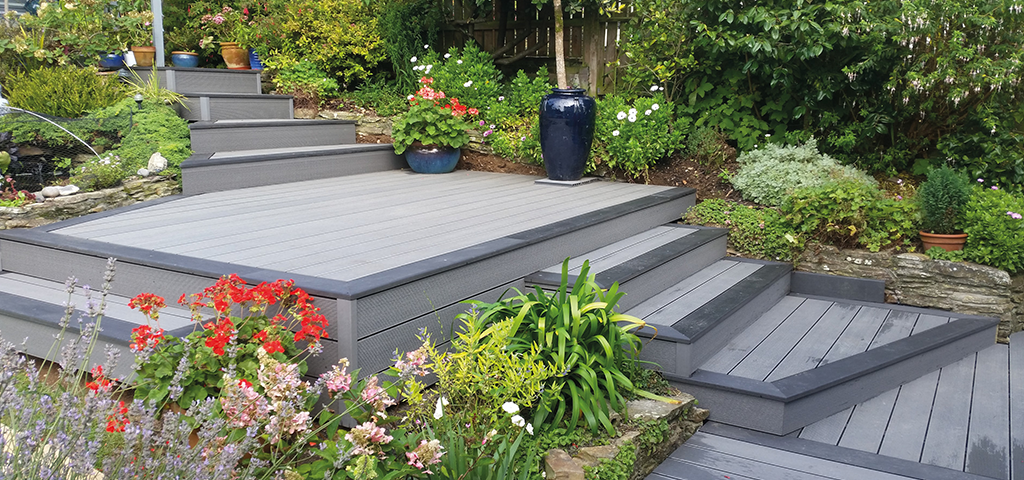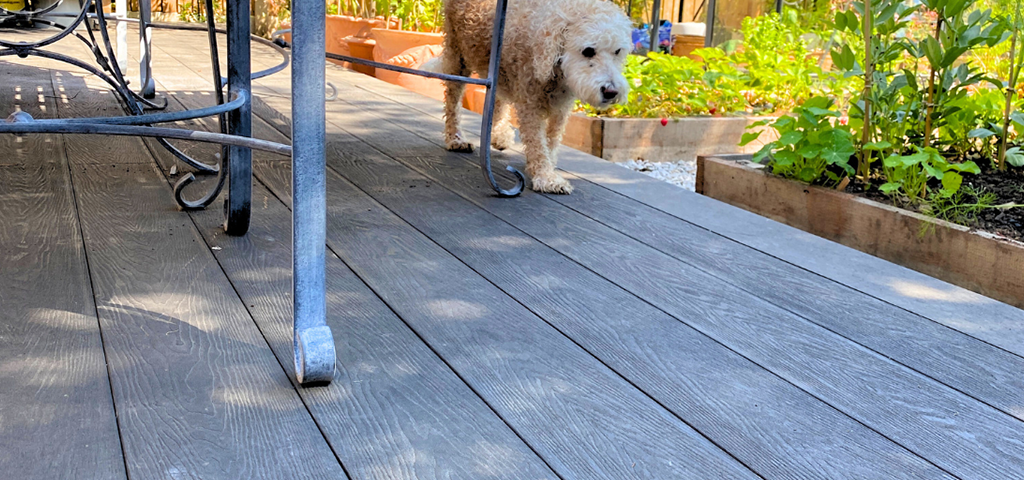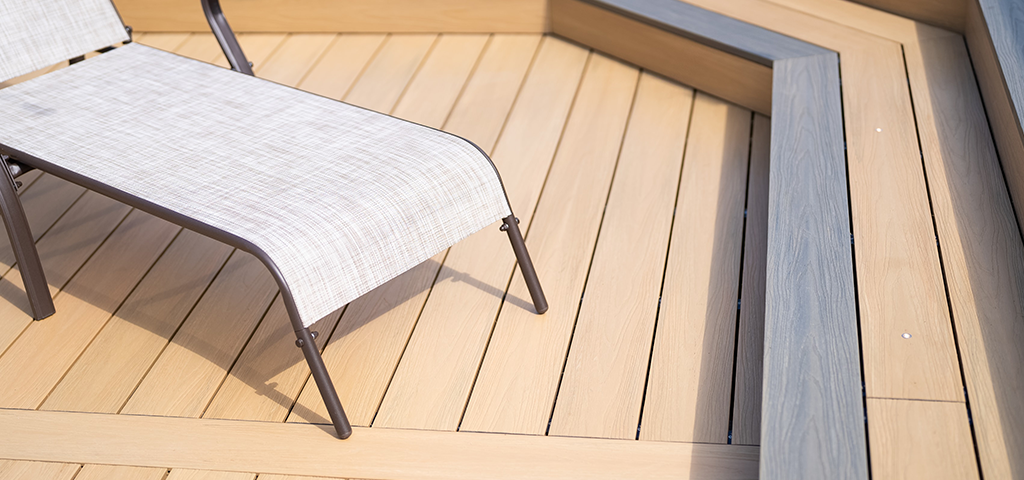Introduction: Understanding Why Composite Decking Fades Over Time
Considering composite decking for your next garden or landscaping project? You’re not alone. Thanks to its durability, low-maintenance design, and stylish appearance, composite decking has become a go-to alternative to traditional timber throughout the UK.
Resistant to splintering, rotting, and insect infestation, it also never needs staining or painting. For most homeowners, these benefits make composite decking an easy decision. But one important factor to consider before making your choice is how the colour of composite decking can change over time.
Composite decking comprises a blend of recycled plastics and natural wood fibres, with the composition varying between manufacturers. At Cladco, for example, our Signature and ProDeck composite decking boards use a combination of 60% recycled hardwood fibres and 40% recycled polyethylene, bonding agents, tints and additives. This composition makes them strong, lightweight, and ideal for outdoor use.
However, it’s the natural wood fibres in the boards that cause subtle fading over time. Just like wallpaper exposed to direct sunlight or timber that naturally bleaches, composite decking is also subject to some degree of colour fade, especially during the first few months after installation.
The good news? This doesn’t affect the strength or lifespan of the boards in any way. Fading is a completely natural part of the weathering process, but one worth considering when selecting your preferred decking type, colour, and design.
Natural Colour Fade: What to Expect in the First Six Months
Before exploring how different colours handle fade, it’s important to understand how composite decking naturally changes over time.
The colour you see when you first order a sample, or even install your decking, isn’t necessarily the final shade your boards will settle into.
Most manufacturers anticipate this weathering process by producing boards in a slightly deeper or more vibrant tone than the intended long-term appearance. This helps ensure that, once the boards are exposed to sunlight and the elements, they fade slightly and mellow into the desired finish.
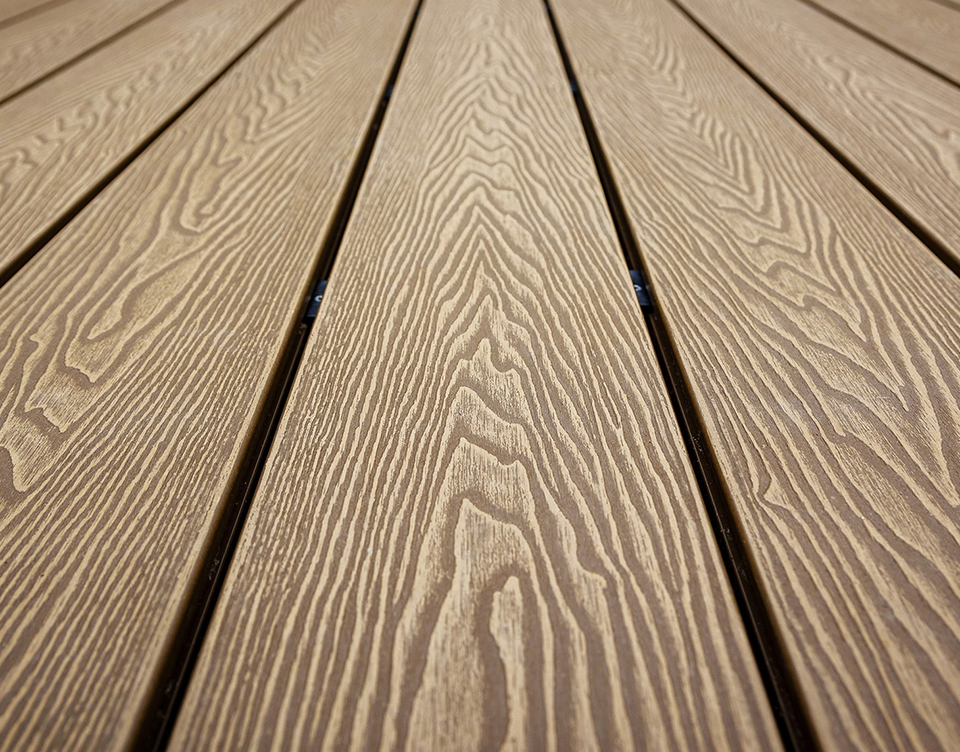
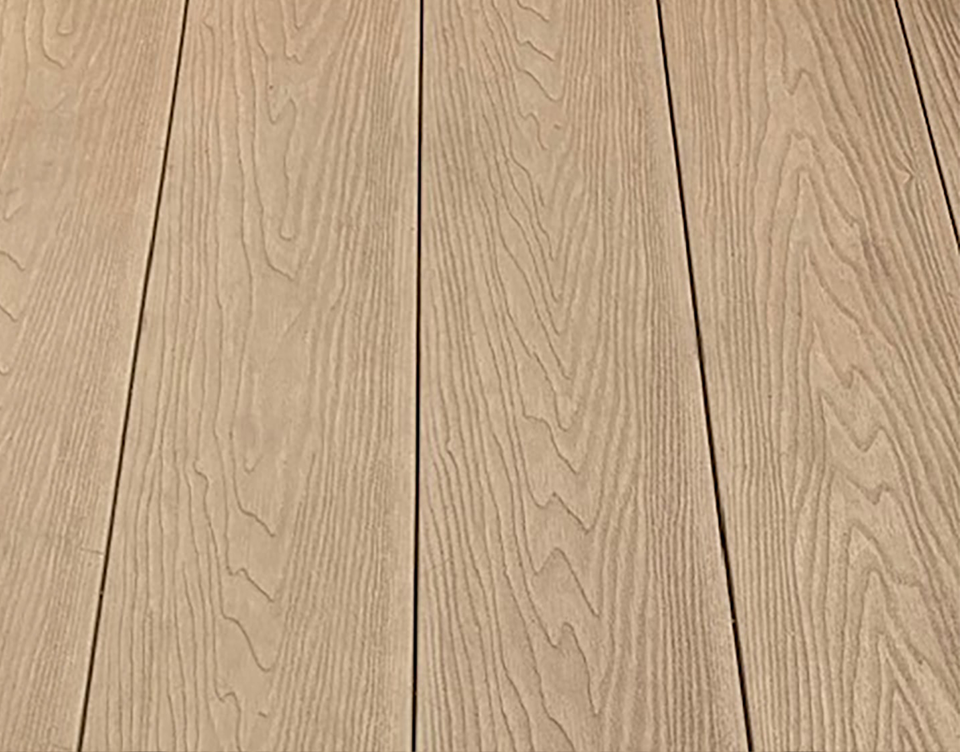
This initial fading typically happens within the first 3–6 months after installation. The boards may appear slightly lighter or more muted than when first installed, especially if they are exposed to direct sunlight. This process is completely natural, affects all composite decking to some extent, and, most importantly, does not compromise the strength or structural integrity of the boards in any way.
So, while samples and product images are invaluable for assessing colour and texture, it’s important to keep in mind that a little softening of tone is expected after installation.
Choosing a Colour: Which Shades Show Fade the Least?
When choosing a composite decking colour for your project, your initial decision will understandably be based primarily on appearance. Do you like the colour? Will it suit the overall style and design of your garden?
Now that you’re aware of natural colour fade, it’s worth considering how certain colours may appear at first glance. A tone that initially seems too dark, like a bold charcoal or coffee tone, may actually fade into a more balanced and neutral shade that perfectly complements your space.
As for which colours fade the least, the reality is that all composite decking boards will fade to some degree. Lighter colours tend to show this change less noticeably, because their starting tones are already close to the final, weathered finish.
Darker colours, on the other hand, can appear to fade more, not because they degrade faster, but because the contrast between the original deep tone and the lightened version is much more visible. This is purely visual and entirely natural, though, and shouldn’t be taken as a sign of poor performance or product fault.
Woodgrain vs. Grooved Boards: Which Holds Colour Better?
Once you have chosen your preferred colour, the next decision is which surface texture to use. The two most popular composite decking finishes are narrow grooved boards, ideal for contemporary designs, and woodgrain-effect boards, which mimic the natural look and feel of timber.
At Cladco, our Signature composite decking features a clever dual-sided design with one side grooved and the other embossed with a woodgrain effect. This allows you to choose either type of finish during installation, or even mix both for added visual variety. The choice is yours!
But does the texture affect how much colour fade you see? In short, yes, it can, at least in terms of how visibly the fade appears.
Grooved boards have narrow, recessed channels that naturally create shaded areas on the surface of the board during the day. These grooves receive less direct sunlight, which reduces overall UV exposure and can make early-stage fading less noticeable.
Woodgrain boards, on the other hand, have a smoother, more evenly exposed surface that absorbs sunlight more consistently. As a result, fading tends to appear more uniform and slightly more visible across the board.
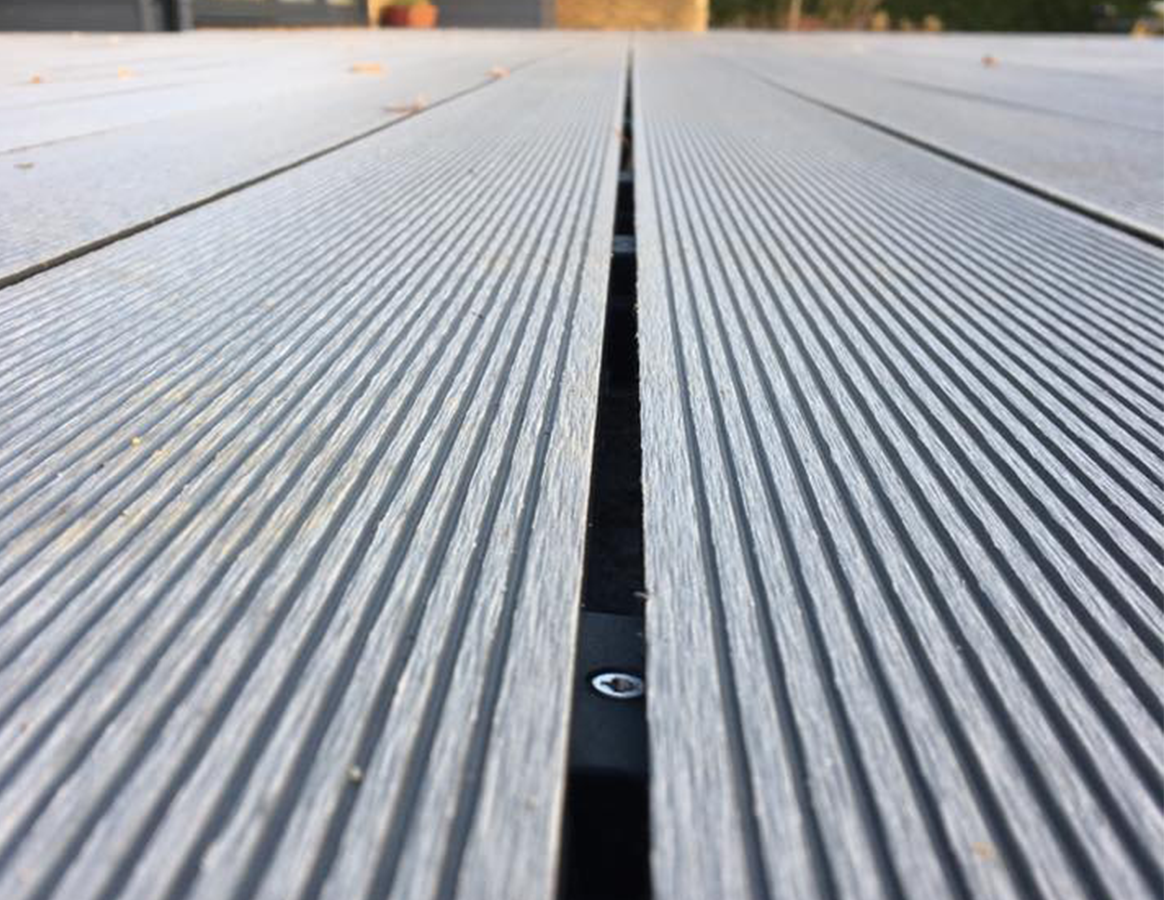
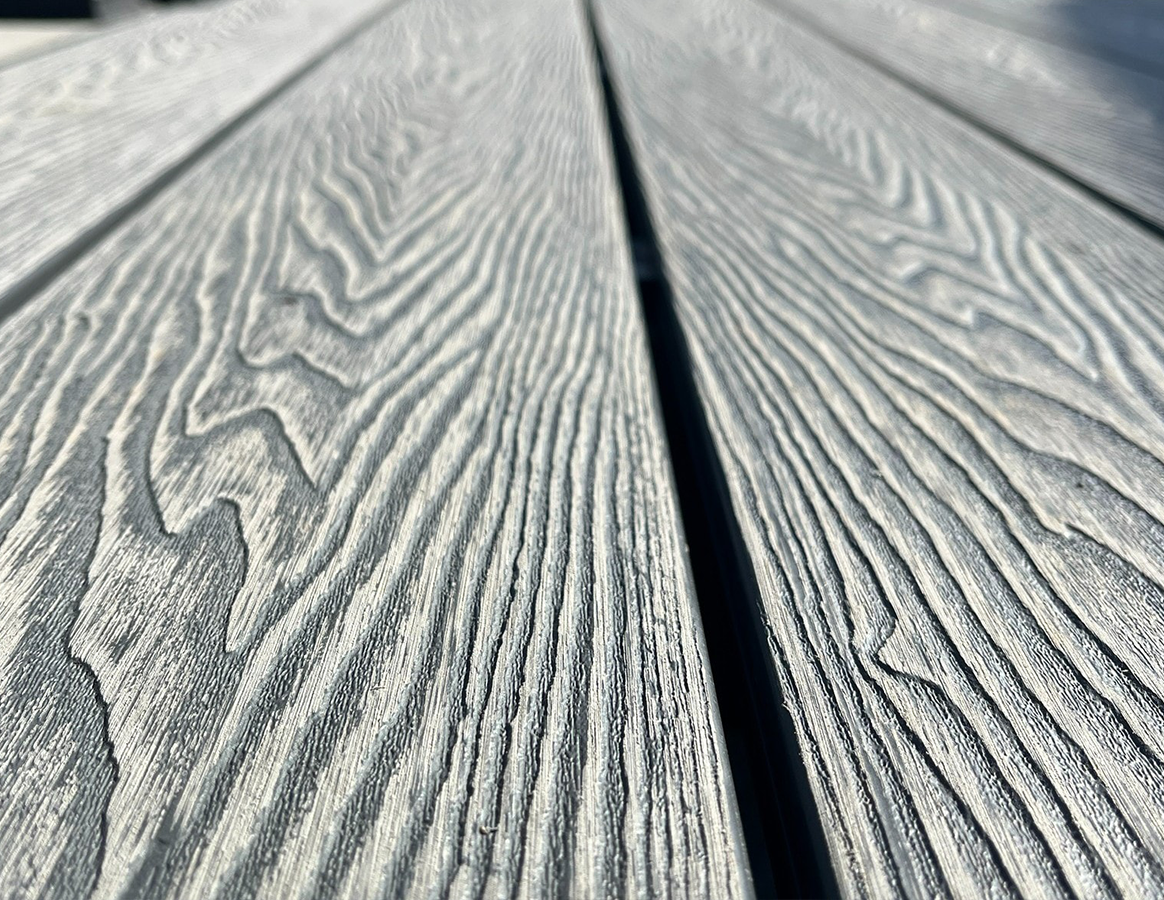
Both finishes are made from the same composite materials, so there's no difference in durability or long-term performance. But if minimising the visual impact of early fade is a priority, and you’re flexible on texture and design, grooved boards may offer a subtle advantage.
Fade-Resistant Options: What Are the Best Decking Choices?
Having explored the natural phenomenon of colour fade in this article, you may have two questions in mind:
- Can I do anything to slow it down or ensure boards fade evenly?
- Are there composite decking solutions that offer greater protection against colour change?
To encourage a more consistent, even fade, there are a few simple steps you can take. Regular cleaning to remove dirt, algae and debris helps ensure boards are evenly exposed to sunlight, preventing patchy weathering. Another useful tip is to occasionally rotate garden furniture and plant pots. Areas left in permanent shade will fade more slowly than sun-exposed surfaces, so shifting items around helps create more balanced UV exposure across the whole deck.
If your boards have already faded and you'd like to refresh their appearance, a suitable composite decking reviver can help restore some of the original colour and vibrancy.
However, if you're looking for a decking solution that offers enhanced colour retention from the outset, there are advanced options available, though they do tend to sit at a higher price point than standard uncapped composite boards.
Capped composite decking features a protective outer shell that not only improves resistance to mould and stains but also helps preserve the original board colour over time.
Our ProDeck composite decking range is constructed from 60% FSC®-certified recycled hardwood fibres and 40% recycled plastic and finished with a polymer-capped surface. This outer layer is specifically designed to enhance durability while also aiding visual longevity and reducing long-term fading.
For even greater colour performance, consider our Nordeck range, a premium, timber-free decking board made from PVC and coated in ASA resin. This high-performance outer layer is the same material used in the automotive industry to protect car exteriors, offering exceptional resistance to UV rays, weathering, and surface wear, even in extreme conditions.
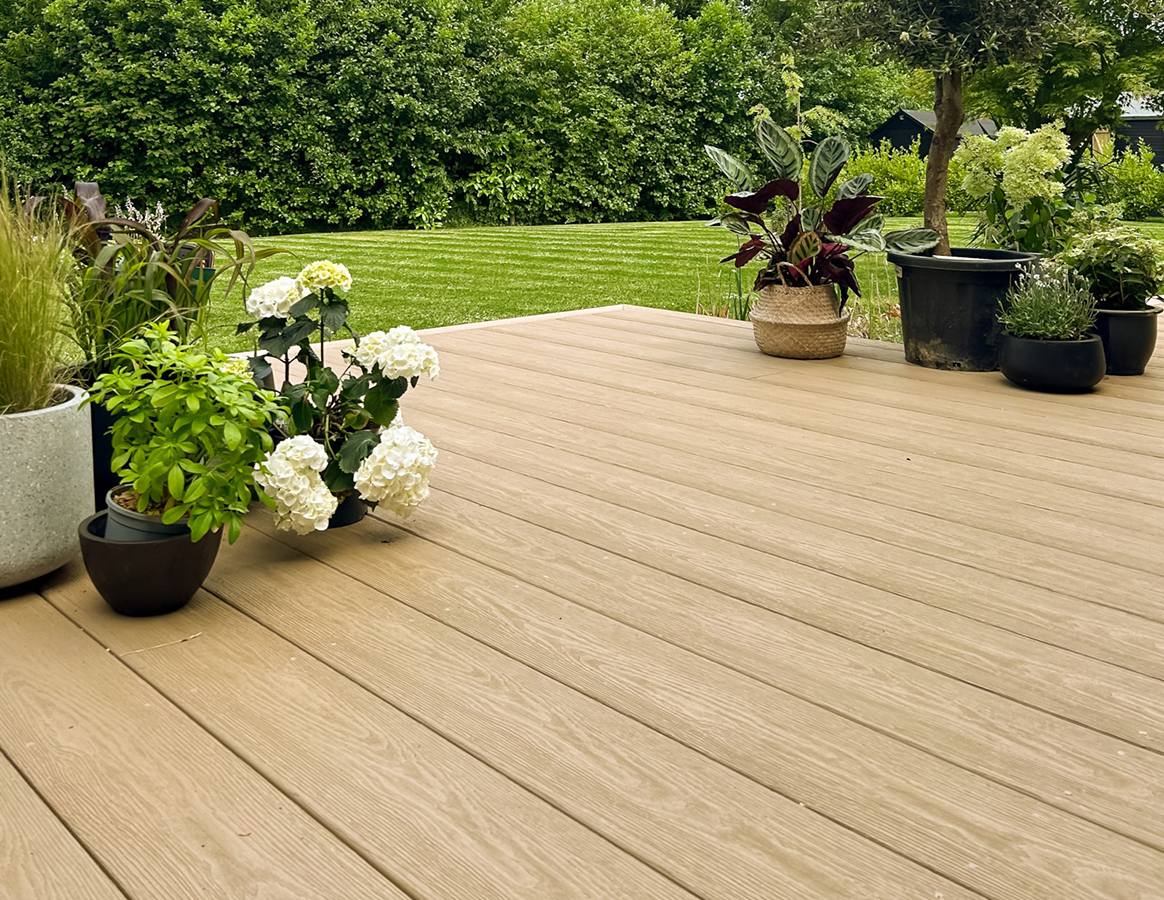
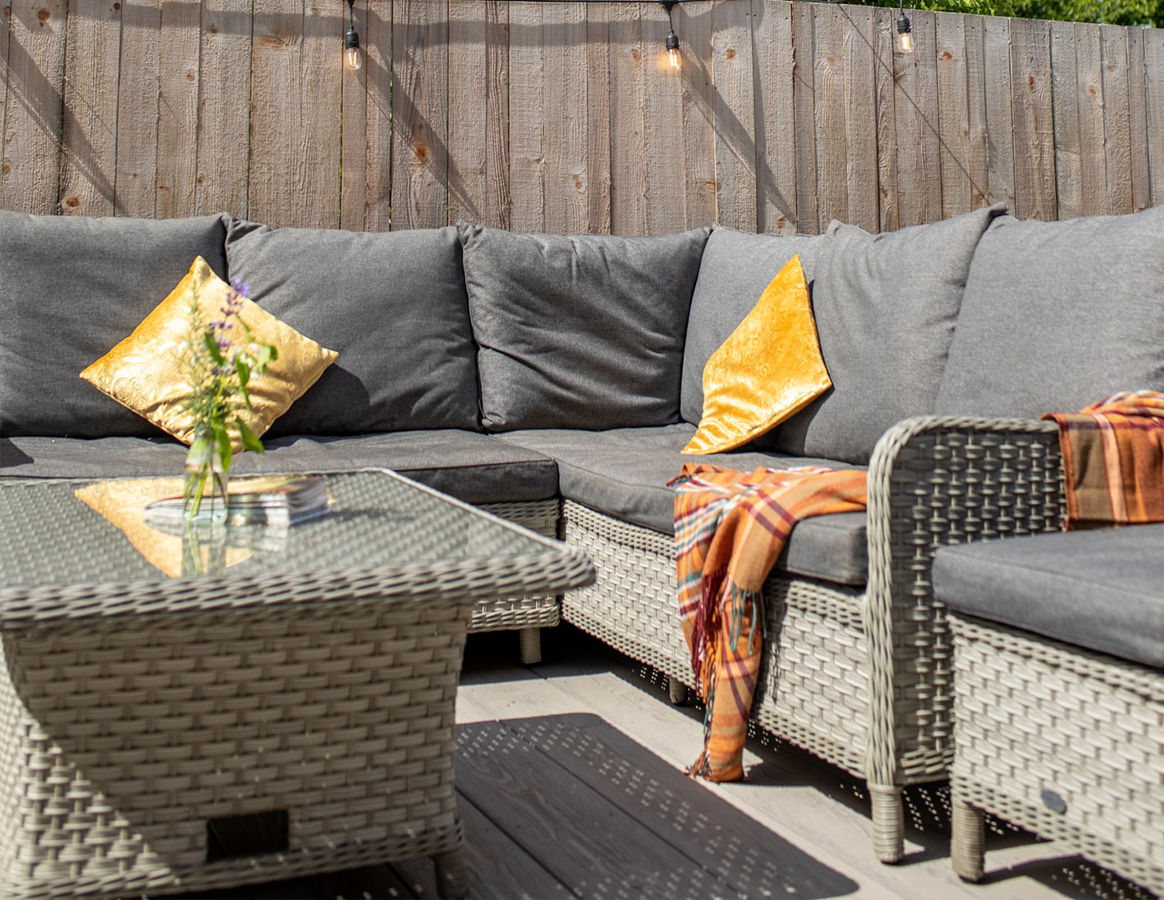
Conclusion
Having now explored the natural process of colour fade in some detail, you should feel more at ease with what to expect and reassured that it's all part of how composite decking settles into its outdoor environment.
A small amount of colour change is completely normal and happens to almost every board, particularly in the first few months after installation. It doesn’t affect the quality, integrity or durability of your decking, and in many cases, the boards mellow into an even more natural-looking finish.
That said, there are still plenty of ways to manage the impact of colour fading, whether by choosing the right shade, keeping your decking clean, or opting for fade-resistant options like ProDeck or Nordeck, which are designed with long-term appearance and performance in mind.
If you’d like to see how our composite decking boards look in real-life installations, why not take a look at our image gallery? It’s a great way to get a feel for how different colours and textures perform once they’ve settled into outdoor spaces and are exposed to natural light.
And if you’re still weighing up your options, don’t worry! Our team is always here to help you find the right board for your project.
